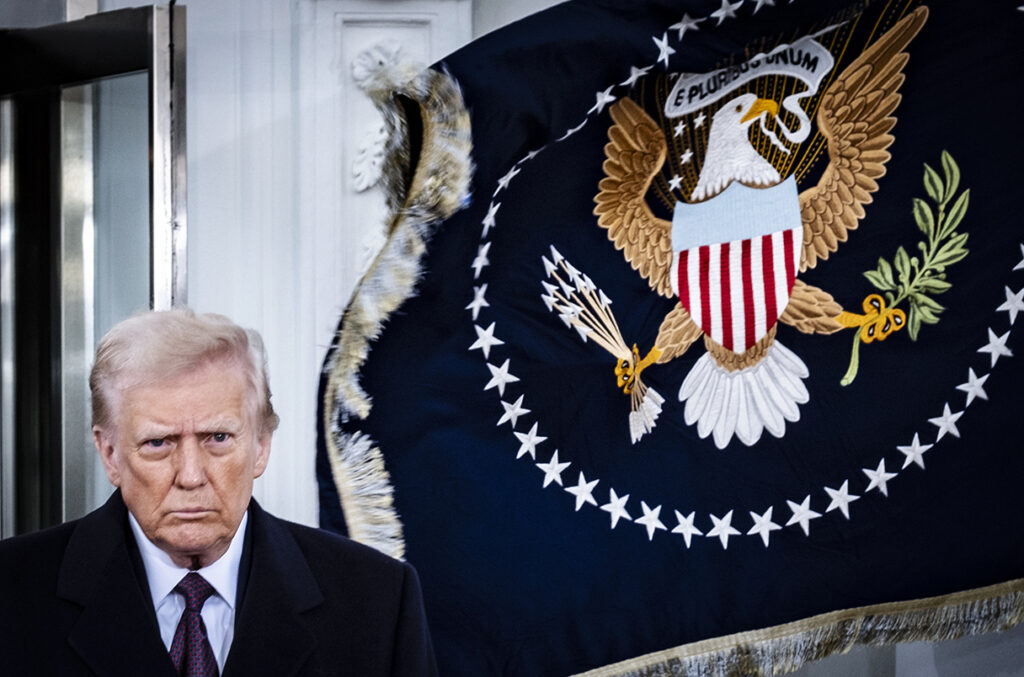In a week marked by flagpoles, firings, and a crypto-fueled controversy, President Trump has made sweeping changes that have literally and symbolically turned the White House upside down. From towering flagpoles outside to executive orders reshaping entire federal agencies inside, these new rules are more than wild—they’re game-changers.

Trump Just Turned the White House Upside Down
| Takeaway | Stat |
|---|---|
| Trump installed 100-foot flagpoles on White House lawns | 2 new poles |
| ICE raids resume with a new arrest quota | 3,000 arrests/day |
| Crypto fundraiser raised millions for access | $148M raised |
Trump’s changes to the White House go far beyond cosmetic. They represent a consolidation of visual, institutional, and even digital power. Whether these shifts prove durable or get rolled back in court, one thing’s certain: the center of American power has never looked—or operated—quite like this.
A Flagpole Statement: Visuals That Roar
Trump isn’t known for subtlety. This time, he gifted the nation two 100-foot flagpoles—one each on the North and South Lawns of the White House. Described as a “visual declaration of sovereignty,” the poles are part of a broader aesthetic overhaul, which includes repaving the historic Rose Garden.
Critics argue the removal of the Kennedy-era magnolia trees crosses a line. Trump, however, says the redesign prevents soggy lawns and better accommodates high-heel shoes during official events.
Federal Agencies on the Firing Line
Several independent federal agencies have seen commissioners dismissed overnight. These include the Nuclear Regulatory Commission (NRC), Equal Employment Opportunity Commission (EEOC), and Federal Energy Regulatory Commission (FERC). Legal scholars warn this could violate constitutional norms that protect agency independence.
I’ve reported on federal governance for years, and I can say with certainty: this level of executive micromanagement is rare—and risky.
ICE Raids Back in Force
After a brief pause, ICE has resumed workplace raids across farms, hotels, and restaurants. Sources say the agency is now operating under a target of 3,000 daily arrests, aiming to enforce Trump’s zero-tolerance immigration agenda.
“This is no longer about safety or security,” said a former ICE official. “It’s a political directive with numbers to hit.”

The Crypto Connection
Trump’s engagement with cryptocurrency has moved from interest to immersion. At a recent fundraiser, $148 million was raised from memecoin investors in exchange for dinner access with senior officials. Attendees included Justin Sun, a controversial figure in the crypto world.
Observers have slammed this as open corruption. Trump’s team insists it’s about innovation and deregulation—but even GOP lawmakers are drafting the “End Crypto Corruption” Act to establish clearer boundaries.
Parade Politics & Remote Work Reversals
In celebration of America’s 250th birthday, Trump orchestrated a $45 million military parade through downtown D.C., causing federal offices to shift to remote work for the day—a striking contradiction to his administration’s usual stance against telework.
At the same time, new rules suggest VA services could be denied based on marital or political affiliations. Civil rights advocates are already filing lawsuits, calling these moves discriminatory.
Press Access: Tightened and Targeted
Journalists from major outlets have reported being blacklisted from briefings, with the AP allegedly excluded for referring to the Gulf of Mexico rather than the new administration-preferred “America’s Energy Bay.” This centralization of media access echoes tactics seen in more authoritarian regimes, say press freedom watchdogs.
Civic Pushback and What Comes Next
Massive protests under the banner “No Kings” have spread across cities, with demonstrators demanding checks on presidential power. Legal challenges are mounting over firings and executive orders, and Congress is increasingly uneasy.
Despite split public opinion—50% support for deportation raids, but over 60% disapprove of crypto entanglements—it’s clear that Trump’s latest wave of actions has awakened a new level of civic engagement.
FAQs
Why are the flagpoles controversial?
Because they symbolize an aggressive shift in White House tone and physically alter its historic profile without consultation or precedent.
Are ICE raids targeting specific industries?
Yes—primarily agriculture, hospitality, and food services, where undocumented labor is prevalent.
Is Trump breaking the law with agency firings?
Possibly. Legal experts say firing commissioners from independent agencies may violate structural protections written into U.S. law.






